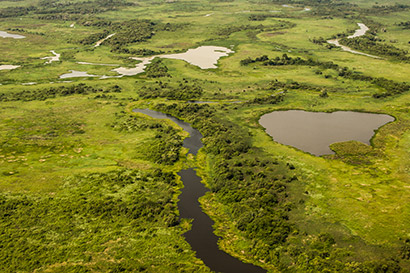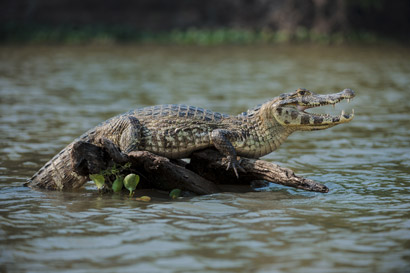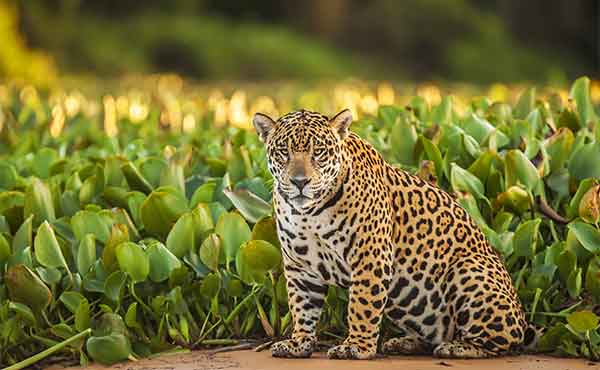
Years ago – eighteen I would guess – I had the privilege of working for several months for WWF Bolivia, preparing the technical documents required for the declaration of the Bolivian Pantanal as a Ramsar Site: a wetland recognised internationally for its biological and cultural importance.

I worked with a team of Bolivian colleagues, comprising a botanist, a herpetologist, an ichthyologist and a freshwater biologist, while from my own experience I prepared a report on the region’s birdlife. Reading each specialist’s report, and talking at length with each colleague, in an effort to weave their work into a cogent whole, I was struck by the joyful realisation that I was seeing this phenomenal place – the Bolivian fraction of the world’s greatest freshwater wetland – through each of their eyes, and hearing its story told in four expert voices.

Later I took part in the public consultations for the Ramsar declaration, flying into remote cattle towns on the Bolivian-Brazilian border to hold meetings, hyacinth macaws surfing the wake of our Cessna as we came to land.
And in those meetings more voices were added to this wondrous story of a wetland without equal. Ever since, I have been enthralled by the Pantanal, its mere mention raising the hairs on my neck.
But the Bolivian Pantanal represents only a small fraction of this incomparable wetland, and it is famously difficult to visit. The great majority of the Pantanal stretches between the Brazilian cities of Cuiaba and Campo Grande. The Brazilian Pantanal is every bit as astonishing and biodiverse as the Bolivian but is vastly larger. Crucially for us, it is also easy to visit in comfort, and visitors to the Brazilian Pantanal now have an excellent chance of watching at length many of its most fabled species: animals including jaguar, giant otter, Brazilian tapir, giant anteater, hyacinth macaw, marsh deer and yellow anaconda, many of which – no more than 20 years ago – were still the stuff of legend.

More remarkable still, in most visitors’ experience, is the sheer volume of wildlife to be seen here: the shouting flocks of turquoise-fronted parrots going home to roost; the placid chestnut herds of capybaras dotting every riverbank and marsh; the forest corridors dripping with nesting egrets, ibises, herons and storks; the yacare caimans crowding ditches and pools; the black howler monkeys roaring to the new day; the crab-eating foxes; the brown brocket deer; the toco toucans; the sheer bewildering wonder of it all.


Most tours to the Brazilian Pantanal fly to Cuiaba in the north, drive down the extraordinary Transpantaneira, staying in one or more of the fazendas along the way, before reaching Porto Jofre, where the Tres Irmaos, Cuiaba and Piquiri Rivers offer – without question – the finest jaguar-watching anywhere in the Americas. Make no mistake: this is a superb way to explore the region. But what if a tour could combine the well-known north of the Pantanal, with its jaguars, giant otters and myriad waterbirds, with the no-less-remarkable wildlife riches of the little-visited southern Pantanal?

At The Travelling Naturalist we like to be ahead of the game, to offer that little bit more, so our Wildlife of the North & South Pantanal does just that. It takes you down the by-now standard (but nonetheless astounding) Transpantaneira from Cuiaba to Porto Jofre – taking in silvery marmosets, jabirus, southern screamers, Azara’s agoutis and yellow-footed tortoises as you go – but in addition it visits Pousada Aguape in the southern Pantanal, which is reached from the city of Campo Grande.
Pousada Aguape is a working cattle ranch, which has been in the same family for 150 years, but it is a ranch which has embraced its responsibility to the landscape and wildlife of the Pantanal. Since 2000 it has been a voluntary member of the Parque Natural Regional do Pantanal, thereby committing itself to preserving the region’s natural wealth. It is also a participant in initiatives to study and protect the hyacinth macaw – bird icon of the Pantanal – and the giant anteaters and southern tamanduas which are found here too.

So if you are looking for a Pantanal tour which shows you all of the well-known wonders of the north and, what’s more, takes you to the south of this exceptional region, to a ranch which has taken wildlife conservation to its heart, then look no further than Wildlife of the North & South Pantanal. This is an unrivalled tour to an unrivalled wetland, where every bend in a river may reveal a jaguar or a tapir, where common piping-guans whistle in the dawn from the tops of tall marsh-side trees, where six-banded armadillos snuffle through the litter of palm-groves, and where every day – without fail – your heart will leap at the vibrant, biodiverse exuberance of the Pantanal.


